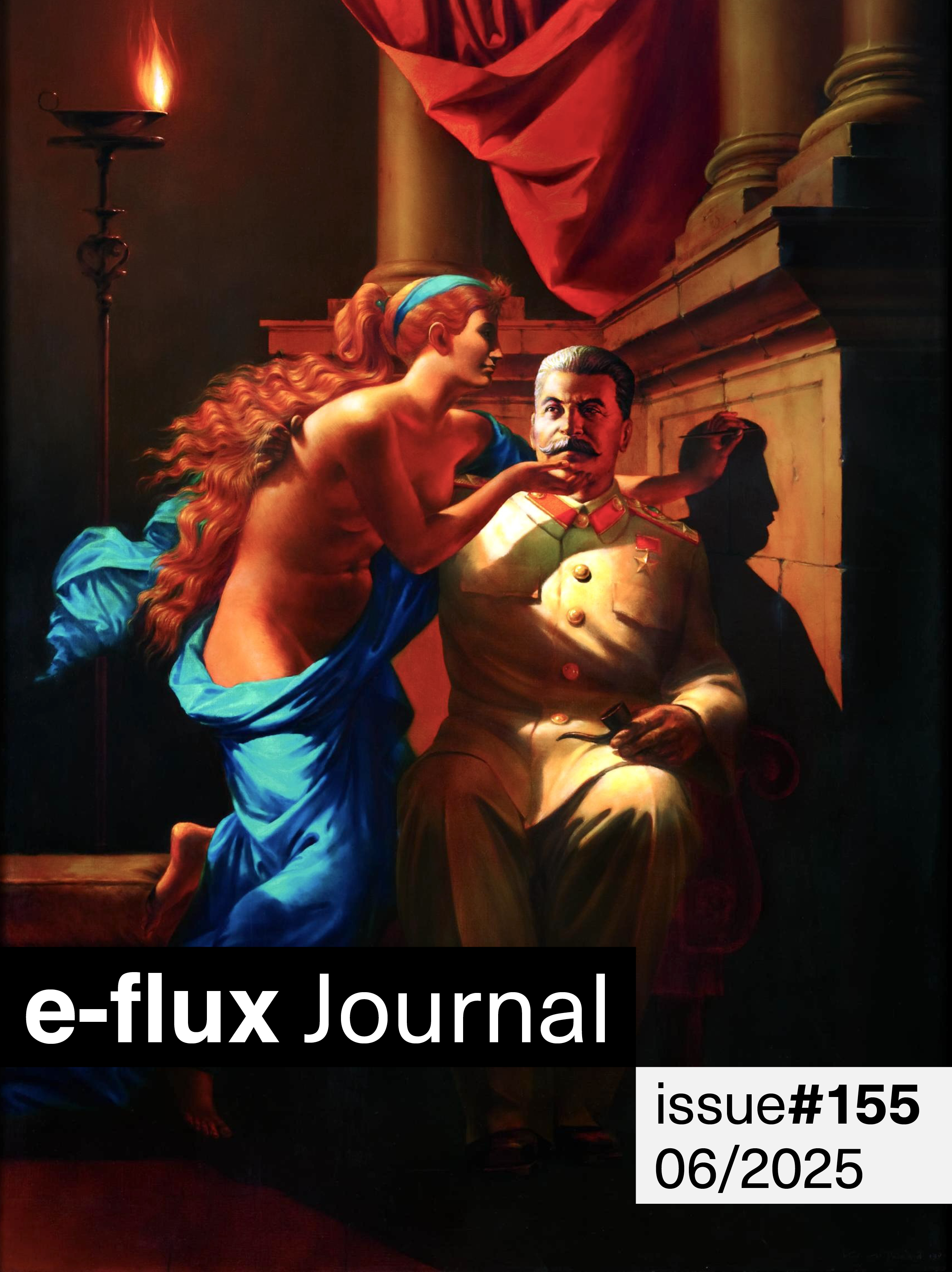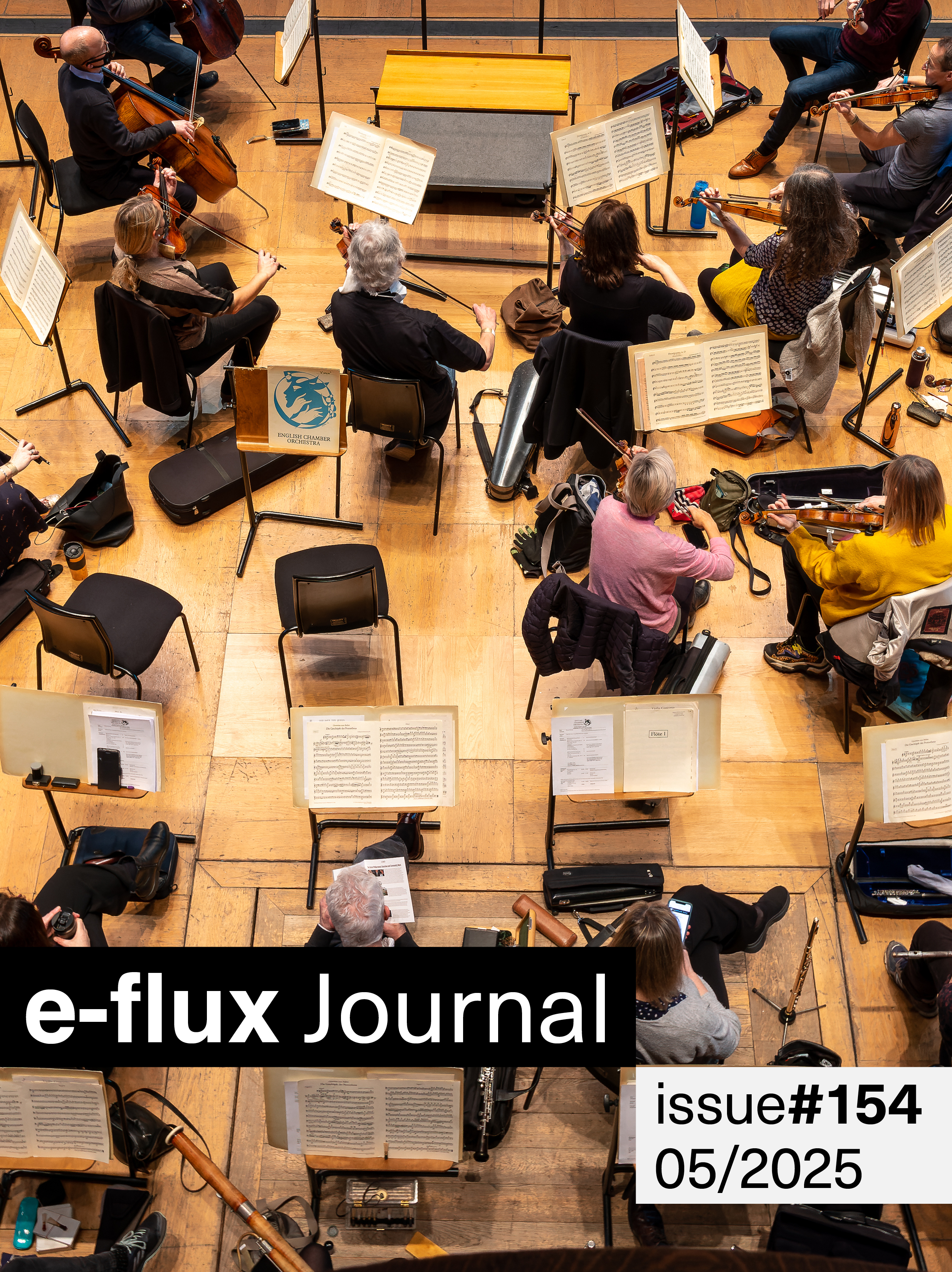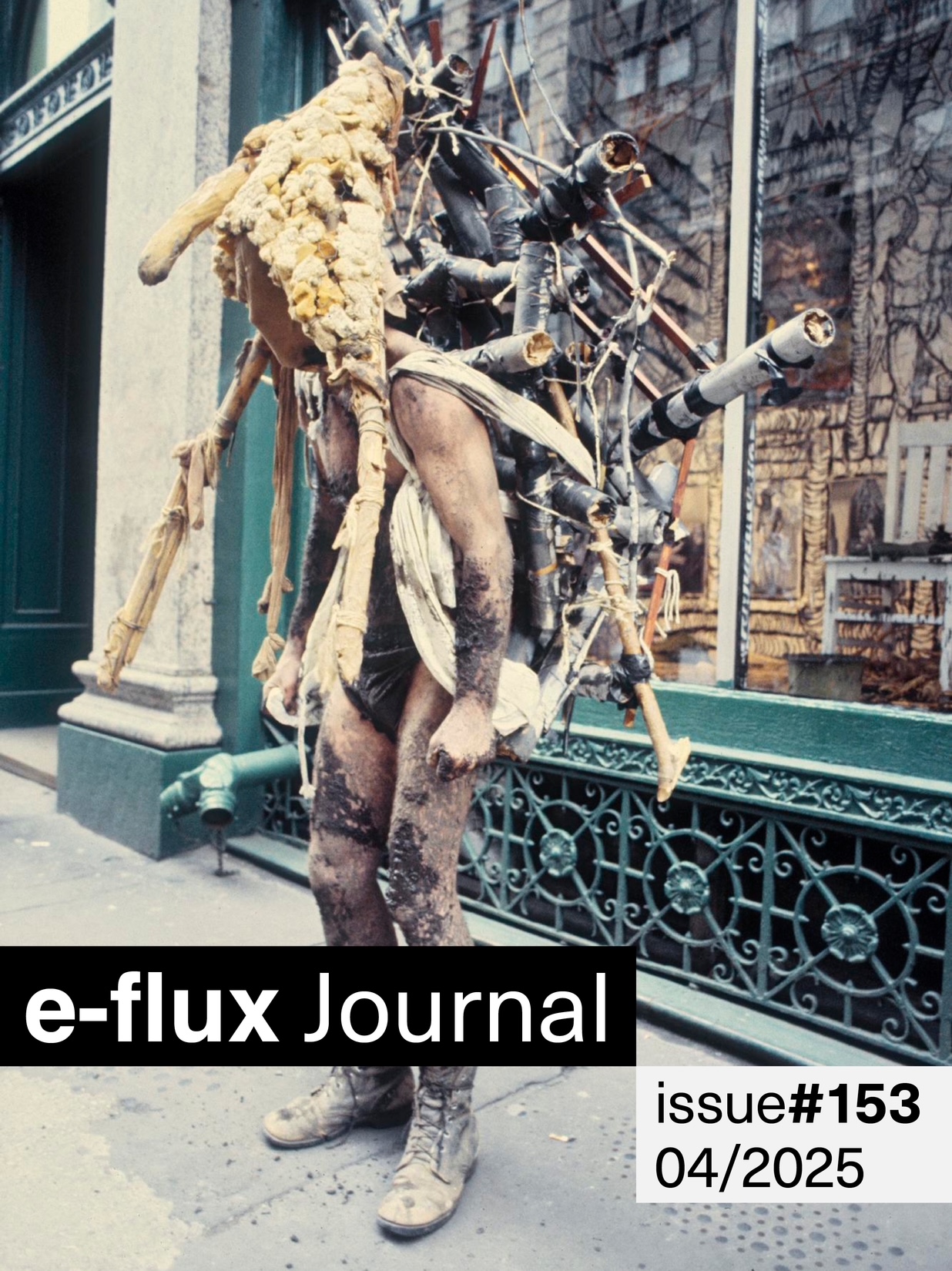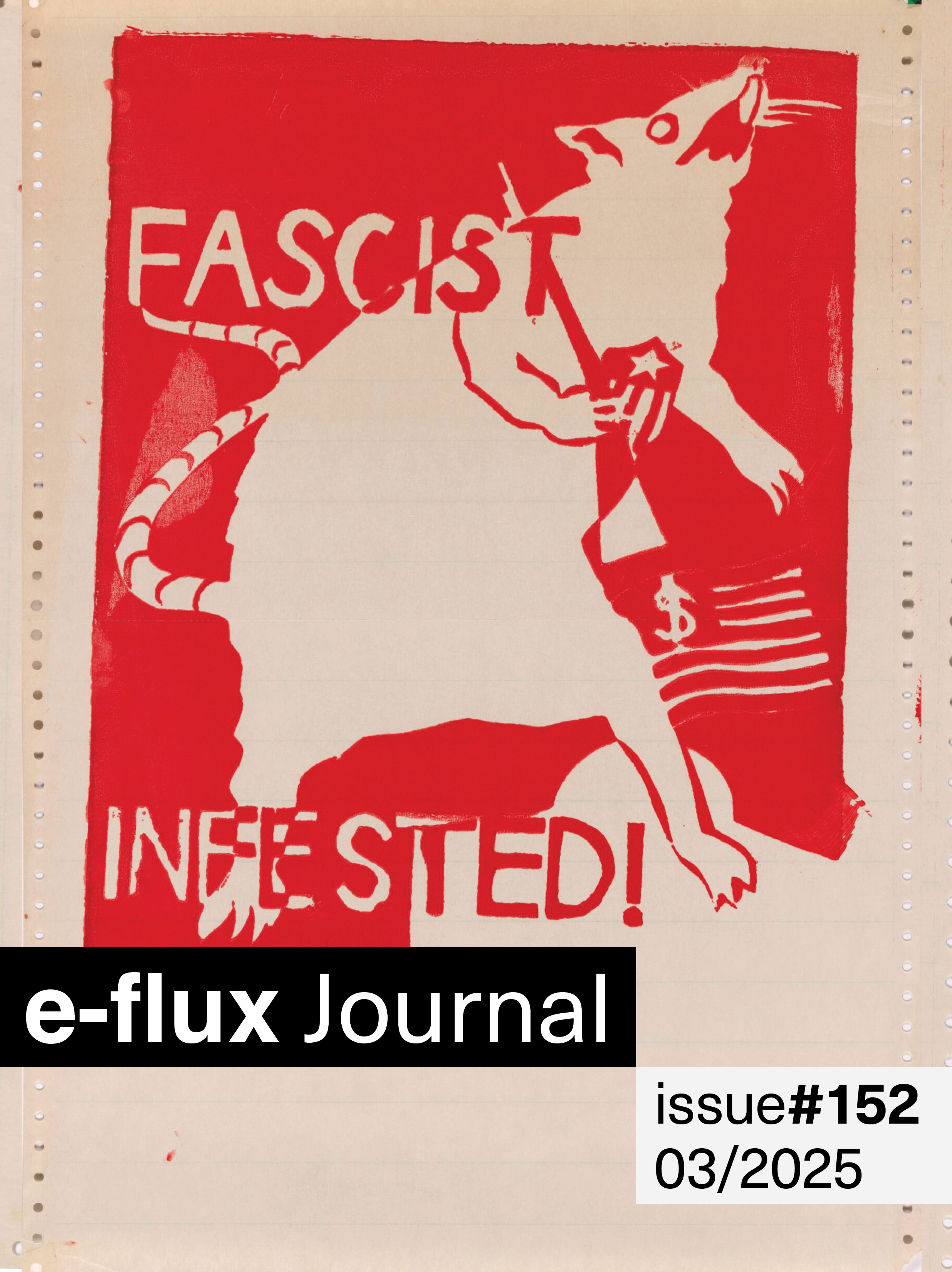e-flux journal issue 100
with Liam Gillick, Luis Camnitzer, Koichiro Osaka, Françoise Vergès, Daniel R. Quiles, Oxana Timofeeva, and Franco “Bifo” Berardi
The “Atoms for Peace” exhibition travelled to Tokyo in 1955 and on to Hiroshima in 1956. The items on display covered topics like isotopic testing on the tread of bicycle tires and factory products, atomic power’s applications to the petroleum industry, and radiation’s effectiveness in removing facial moles. 260,000 people in Japan visited the exhibition between its stops in Tokyo, Nagoya, Kyoto, Osaka, and Hiroshima. When the show was installed at the Hiroshima Peace Memorial Museum, its attendance numbers exceeded the annual attendance of the memorial museum itself. The previous year, that same memorial museum also hosted the First World Congress Against Atomic and Hydrogen Bombs.
The United States’ “Atoms for Peace” exhibit was a touring campaign, allegedly supported by the CIA and the Yomiuri Shimbun, one of Japan’s largest national newspapers. Its landing in Tokyo and Hiroshima aimed to rebrand nuclear energy. US President Eisenhower, who delivered a UN speech of the same name in 1953, delivered a message for the exhibition’s 1955 opening in Tokyo: “The exhibit stands as a symbol of our countries’ mutual determination that the great power of the atom shall be dedicated to the arts of peace.” Especially on its second stop in Hiroshima, the expo's audience consisted of survivors of the atoms detonated over the same city to deathly devastating effect less than a decade before, in 1945.
Thinking about this half-century-old case of spin and circulation from the perspective of 2019 resonates not in content, but somewhat in context, with conversations around the current Whitney Biennial. This year, there are calls by artists both inside and outside the exhibition and institution for the resignation of Warren Kanders, vice chair of the Whitney board. This visible figure is also an executive at the Safariland corporation, whose weapons and teargas products enact state violence on the bodies of refugees, protestors, and victims of police brutality.
In this issue of e-flux journal—number 100—Liam Gillick takes up Duchamp’s provocation that artworks should be considered in terms of twenty-year time spans. For Gillick, the twenty-year scale reveals points of change more effectively than decades: “Twenty years is enough time to understand the development of a new technology through to its application. Twenty years is enough time for new educational models to take effect—both negatively and positively. Twenty years is still enough time to wonder whether a set of ideas within the art context retains any relevance or needs reconsideration.”
This year there is a macabre offering on display at the Venice Biennale, placed in the Arsenale without a label or identifying information. A boat in which 800 migrants died trying to reach Europe was floated back and moved to Venice at enormous expense. Since the Biennale opened, the ship has been presented as a hybrid of a monument (to what?) and a Duchampian readymade. Now, the festival’s curator spins the narrative, claiming the boat is not art. “It’s not art,” he declares, “but it’s an artist who initiated this presentation … taking something real from the world, something associated with tragic death and is putting in the context of an artworld to ask questions.”
In 1960, Luis Camnitzer, as part of a generation of rebellious students working to change the curriculum of the art school in Uruguay, was assigned the task of informing an art history professor and poet at the school that the students no longer needed their services. The young Camnitzer approached the professor and poet to explain the students’ position: “We feel that you reduce art to only two topics: love and death.” Puzzled, the professor and poet replied: “But, is there anything else?” Camnitzer still grapples with this exchange and all its implications, as he details in his essay in this issue, “Where is the Genie?”
Koichiro Osaka’s text for this issue begins at the Sunshine 60 skyscraper in Tokyo. According to myth and a historical reading, the skyscraper is named for the sixty Japanese war criminals executed in 1948 in what was then Sugamo Prison. In 1978, the former prison became the tallest skyscraper in Asia. As Osaka explains, Sunshine 60 may be the largest war monument ever built. The building serves at once as a haunted gravesite and reassurance of the ongoing sunshine of fascism and capitalism.
Also in this issue, Françoise Vergès describes a daily ritual in multiple urban centers where thousands of black and brown women invisibly “open” the city. Vergès describes how middle-aged, often immigrant women who do the dirty work—the cleaning work—without being seen, so that younger, generally paler neoliberal bodies can perform visible work in those same spaces. Vergès details the hours in the morning when maintenance workers, exhausted, return from their twilight-hour work on public transportation, while the working bodies of the business world begin their pre-work routines and commutes.
In an essay exploring “What Lenin Teaches Us About Witchcraft,” Oxana Timofeeva outlines a vision of camaraderie: one that transcends the borders of humanity and places theories of the comrade (such as Jodi Dean’s from this journal, among others) in a long line of sorcery and witchcraft—a line from which Lenin himself may have descended. Timofeeva writes that comradeship is not easy. “Along with sorcery,” she says, comradeship “can evoke forces that an individual cannot control.” She relays Goethe’s 1797 poem “The Sorcerer’s Apprentice” to illustrate how these forces can be destructive. With the master sorcerer away, the apprentice casts a magic spell. The process goes awry, wreaking a level of havoc. But the apprentice, panicking, has neither skill nor power to stop it alone. Timofeeva explains that “Georges Bataille links this figure of the sorcerer’s apprentice to art: ‘The sorcerer’s apprentice, first of all, does not encounter demands that are any different from those he would encounter on the difficult road of art.’”
Concluding issue #100, Franco “Bifo” Berardi writes that “The contemporary subconscious is marked by two powerful gravitational pulls: extinction and immortality, which feed into each other.” Berardi admits that the answer to the question of exactly what extinction he is talking about is not clear to him. At the end of the essay, he asks: “Is crime the inducer of Chaos, or the generator of Order?”
Berardi speaks to an even larger current condition, one of climate change, near incomprehensible inequalities that mark wealth distribution of our current time, and the panicking predators thereof and therein.
“Is there a way out from this end?” Bifo asks in a coda to the essay. “Yes, of course: it is you, the unpredictable.”
—Editors
Liam Gillick—We Lived and Thought Like Pigs: Gilles Châtelet’s Devastating Prescience
To Live and Think Like Pigs is an account of two dominant ideas from the 1990s that have now, two and three decades later, become markers of crypto-freedom in the hands of global data boys and have led to tragic inequalities of movement. It is a book against the way chaos theory, nomadism, and anemic underdeveloped concepts of difference were used throughout the 1990s as an enlightening model—and against poorly deployed mathematics-as-theory in general. To Live and Think Like Pigs is an account against a nomadism that appeared as a liberatory metaphor at the end of the twentieth century, yet in the twenty-first has become a dominant model of the cultural class in permanent motion, and a concomitant growing underclass penned in and restrained. It is a book against the “rational” individual as human data unit. It is against the political “market.” It is against the self-policing of all aspects in life. It predicts the envy culture of “rhinoceros psychologies and reservoirs of the imaginary for the pack leaders of mass individualism.” And roundly mocks them. And in so doing, also roundly mocks our 2019.
Luis Camnitzer—Where is the Genie?
I like to use Aladdin’s lamp as a simile for what happens in the art world. Artists make their work as they would make lamps: in the hope that the genie is inside. Sometimes they even believe that they can control the presence of the genie. Museums then display the art-equivalents of the lamp, betting, not just hoping, that the genie is in there and will stay there for the foreseeable future. The genie is intangible while the lamps are not, so attention tends to focus on the technical execution of the lamp, hence the emphasis on crafts and finish, or, after Duchamp, on how well they were intellectually framed as objects capable of containing the genie. The genie is in the lamp because museums say so, and the canon is the measuring stick with which they validate their statement.
Koichiro Osaka—The Imperial Ghost in the Neoliberal Machine (Figuring the CIA)
At Sunshine 60, a dark shadow lurks in the foundations of the bright, lively shopping mall. The reverberating voices of happy children and families on vacation dissipate into the vacuum of history, created by the ghost of an ill-fated epoch. Although it was built to reflect a successful economy (utilizing the best technology of the time to instill great pride), the mall’s structure ironically mirrors the violent totalitarianism of its past. Previous machinations of mass control remain corporeally present in the form of this building, albeit camouflaged in other modes of manipulation, while they continue to shift and coerce under new terms of power. Consumerism’s salute to imperialism!
Françoise Vergès—Capitalocene, Waste, Race, and Gender
In this symbolic and material economy, black and brown women’s lives are made precarious and vulnerable, but their fabricated superfluity goes hand in hand with their necessary existence and presence. They are allowed into private homes and workplaces. But other members of superfluous communities—such as the families and neighbors of these workers—must stay behind the gates, unless they are willing to risk being killed by state police violence and other forms of the militarization of green and public spaces for the sake of the wealthy. For these workers, the special permit to enter is based both on the need for their work and on their invisibility. Women of color enter the gates of the city, of its controlled buildings, but they must do it as phantoms. Racialized women may circulate in the city, but only as an erased presence.
Daniel R. Quiles—Railways Are the Future: ABTE Against Neoliberalism
In their collective formations, postcrisis practices in Argentina paralleled larger changes in social movements towards self-organization, and horizontalidad, or horizontality. Marina Sirtin defines horizontality as “a form of direct decision making that rejects hierarchy and works as an ongoing process.” Horizontalism and self-organization imply modes of production that no longer depend on the government for help—although some such groups received funding from Néstor and Cristina Fernández de Kirchner’s successive administrations. ABTE adapted two horizontalist characteristics: leaderless organization and the performance of extra-governmental services. Yet ABTE’s labor was artistic precisely insofar as it was no longer necessary, existing in the breach between past and present. The group sidestepped a neoliberal reading of horizontalism as proof of the “resilience” of groups left to subsist without government support, which ironically justifies further reduction of state services. It also refuses any reading of “social practice” as proof that contemporary art might supplement development or services that a state could provide.
Oxana Timofeeva—What Lenin Teaches Us About Witchcraft
In this impersonal multiplicity, there is no one. What does this “no one” mean? It means a structural impossibility for “one” to be. A comrade is never alone—not in the trivial sense that there is always someone else around, but in the more radical sense that you are always many. You are Legion. This is how you succeed in “the fine art of not getting arrested,” persecuted, or burned alive by the inquisitors of your age. When you are many, you turn your back to the police officer and disappear. Comradeship creates a shield against the witch hunters who will try to catch us one by one, but who will never destroy the whole set of alliances that make up the Great Sorcery International. You know what I mean.
Franco “Bifo” Berardi—Game Over
Environmental collapse, global civil war, nuclear proliferation, and epidemics of panic and depression are steps towards extinction. But this is not the end of the world, since abstraction has created a world of its own, subsuming social language and prescribing the social forms of interaction.










